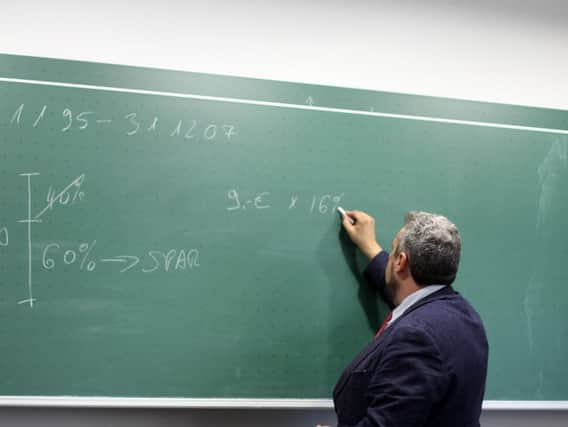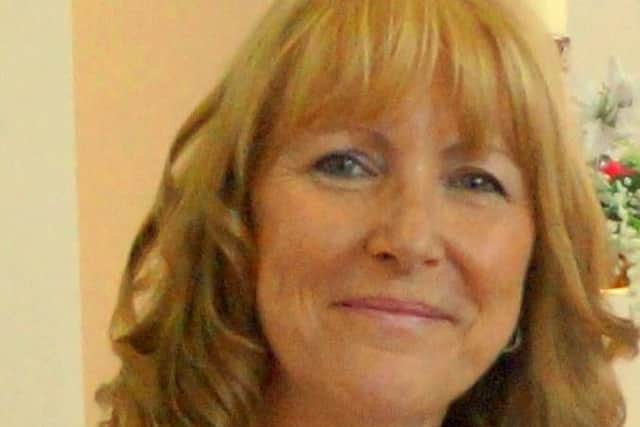Dyscalculia: the hidden classroom problem


Ask anyone if they’ve heard of dyslexia and the vast majority, if not all, will say they have.
Ask if they’ve heard of dyscalculia and I would like to bet the majority will say they haven’t.
Advertisement
Hide AdAdvertisement
Hide AdWhen I trained to be a teacher, we had a fair amount of training on how to identify and help children with dyslexia. Dyscalculia was never mentioned.


During my teaching career, I saw many children displaying similar problems with learning maths that I could personally relate to.
I am dsycalculic, although never officially diagnosed. Compared to dyslexia, there has been very little research into this learning disability, and therefore not as much is known about the condition.
The Dyslexia Association has a section on their website which has a list of signs that can be indicators of dyscalculia. As with all learning disabilities, however, there is no definitive set of indicators – every child will have different elements and a lot more research needs to be done.
Advertisement
Hide AdAdvertisement
Hide AdWhat is common, in my experience, is a very early realisation that they cannot learn and perform mathematical activities at the same speed and level as their peers.


Learning the basic building blocks of maths such as number bonds, doubling and halving and learning times tables are particularly problematic. This in turn, quickly leads to maths anxiety and can start as early as Year One.
The recent announcement by Schools Minister Nick Gibb that every child must learn their times tables by the age of nine is tragic news for dyscalculic children. Testing – especially timed tests are the worst nightmare of these children; to hear they will be facing new online tests to examine their ability breaks my heart.
Children with dyscalculia do not have the same understanding of number, they lack an innate ‘feel’ for numbers, symbols are often meaningless.
Advertisement
Hide AdAdvertisement
Hide AdIt is stated that between four and six per cent of the population have dyscalculia.
I would argue that this estimate is on the low side due to the lack of available, reliable testing, lack of knowledge and difficulty with diagnosis.
So what can be done?
The earlier the problem is spotted the better. There is no ‘quick fix’ and if you are dyscalculic you always will be. There are, however, ways to minimise the difficulty.
Simply knowing that it is not indicative of a lack of intelligence, but put simply, the way the mathematical thinking part of our brain is wired, can be enormously reassuring.
Advertisement
Hide AdAdvertisement
Hide AdWe just learn maths in a different way, one that is in conflict with the crammed, over tested maths curriculum our children have to endure.
Play plenty of games with your child to reinforce the basics but never put pressure on the child to perform under timed circumstances. Repetition is the key and a ‘spiral’ approach, returning to the same concepts but taking them a little further on, but only if they are ready.
Dominoes are a great example. Dyscalculics have difficulty understanding the value of a symbol representing a number so get them to become familiar with a number by counting the dots on the dominoes.
Create a game with the dominoes that will involve practicing simple addition skills by adding the dots on adjoining dominoes, eventually moving on to doubling and halving, odds and evens.
Advertisement
Hide AdAdvertisement
Hide AdThe key here though is to start simple and not to move on too fast. Dyscalculics need to ‘over-learn’ maths facts.
Teach the child to ‘see’ numbers in their head as dots in groups of five, so six would be a group of five plus one dot and so on.
This helps massively with mental addition/subtraction and multiplication.
Another game to play with younger children is to have a number written on a card and a corresponding number of counters (pieces of pasta, coins etc). Cover up a few of the objects and ask the child to tell you how many are covered, ask how they worked it out. This is particularly effective in helping them learn the number bonds to 10.
Advertisement
Hide AdAdvertisement
Hide AdNever show signs of frustration or impatience and try to avoid worksheets. A dyscalculic can easily become overwhelmed when faced with an A4 piece of paper crammed with numbers. If this is the homework they have been given, then one idea is to copy out a couple of the questions on a separate large piece of paper – far less daunting.
And talk to them about the work – encourage the child to talk to you about the way they are working out the answer.
Now back to the burning issue of times tables and why I despair at the expectation that all children must know them by nine. Dyscalculics will not be able to retain all the facts. They need to learn tricks to help them work them out; it can be done, but this takes time and a solid understanding of doubling, halving, addition and the concept of multiplication and division – the opposite of rote learning.
There is much work yet to be done to get dyscalculia as widely recognised and acknowledged as dyslexia. I sincerely hope that will not be too far in the future.
* Kath Graves has 20 years primary teaching experience and has carried out independent research into dyscalculia and maths anxiety. She has completed a short dyscalculia awareness training course.